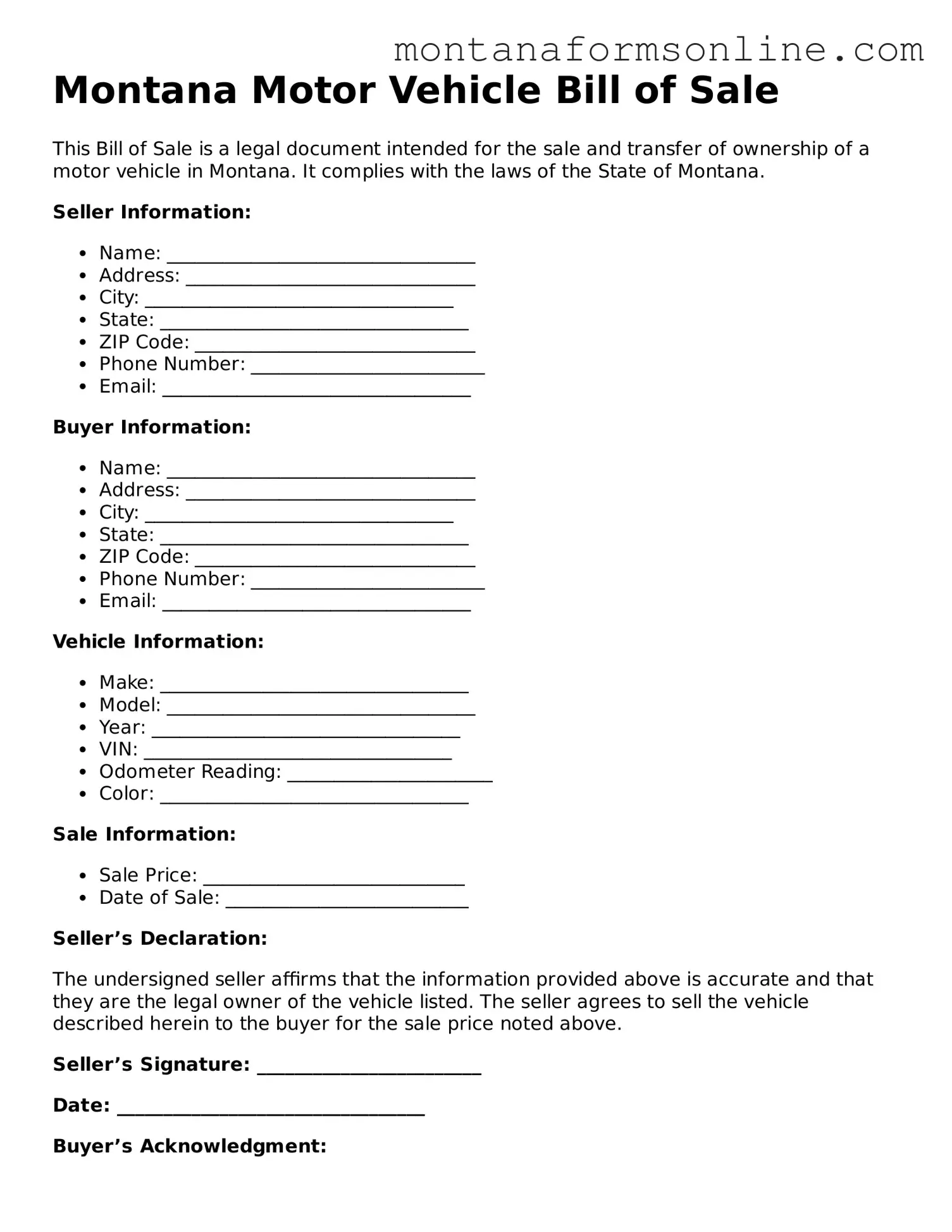The Montana Motor Vehicle Bill of Sale form shares similarities with the general Bill of Sale document used in many states. Like the Montana version, a general Bill of Sale serves as a written record of the transfer of ownership for personal property, including vehicles. It typically includes details such as the buyer's and seller's names, the description of the item being sold, and the sale price. This document protects both parties by providing proof of the transaction and can be used for various types of personal property, not just vehicles.
The Vehicle Title Transfer form is another document similar to the Montana Motor Vehicle Bill of Sale. This form is essential when ownership of a vehicle changes hands. It serves to officially record the new owner's information with the state’s Department of Motor Vehicles (DMV). While the Bill of Sale documents the sale, the Title Transfer form is critical for legal ownership and registration, ensuring that the new owner can legally operate the vehicle.
The Odometer Disclosure Statement is also akin to the Montana Motor Vehicle Bill of Sale. This document is often required during the sale of a vehicle to verify the mileage at the time of transfer. Similar to the Bill of Sale, it protects both the seller and the buyer by preventing odometer fraud. It is especially important for transactions involving used vehicles, where mileage can significantly impact the vehicle's value.
The Vehicle Registration Application form is another relevant document. This form is submitted to the DMV to officially register a vehicle after it has been purchased. While the Bill of Sale serves as proof of purchase, the Registration Application provides the necessary information for the state to update its records. Both documents work together to ensure that the vehicle is legally registered in the new owner's name.
The Affidavit of Heirship can also be compared to the Montana Motor Vehicle Bill of Sale, particularly in cases where a vehicle is inherited. This document establishes the rightful ownership of a vehicle when it is passed down through inheritance. Similar to the Bill of Sale, it serves as a legal declaration that can help facilitate the transfer of ownership without the need for probate, providing a clear path for the new owner.
The Power of Attorney for Vehicle Transactions is another document that can be likened to the Montana Motor Vehicle Bill of Sale. This form allows one person to act on behalf of another in matters related to vehicle sales. In situations where the seller cannot be present to complete the sale, this document grants authority to another individual to sign the Bill of Sale and other necessary documents, ensuring the transaction can proceed smoothly.
Understanding the importance of warranties, the comprehensive Asurion F-017-08 MEN form can significantly enhance customer service interactions. This form plays a vital role in addressing any warranty claims effectively and ensures clear communication between the consumer and Asurion.
Lastly, the Release of Liability form is similar in purpose to the Montana Motor Vehicle Bill of Sale. This document protects the seller from any future claims related to the vehicle after the sale has been completed. By signing the Release of Liability, the seller indicates that they are no longer responsible for the vehicle, while the Bill of Sale serves as proof of the transaction itself. Both documents are important for ensuring that both parties are clear about their rights and responsibilities after the sale.
